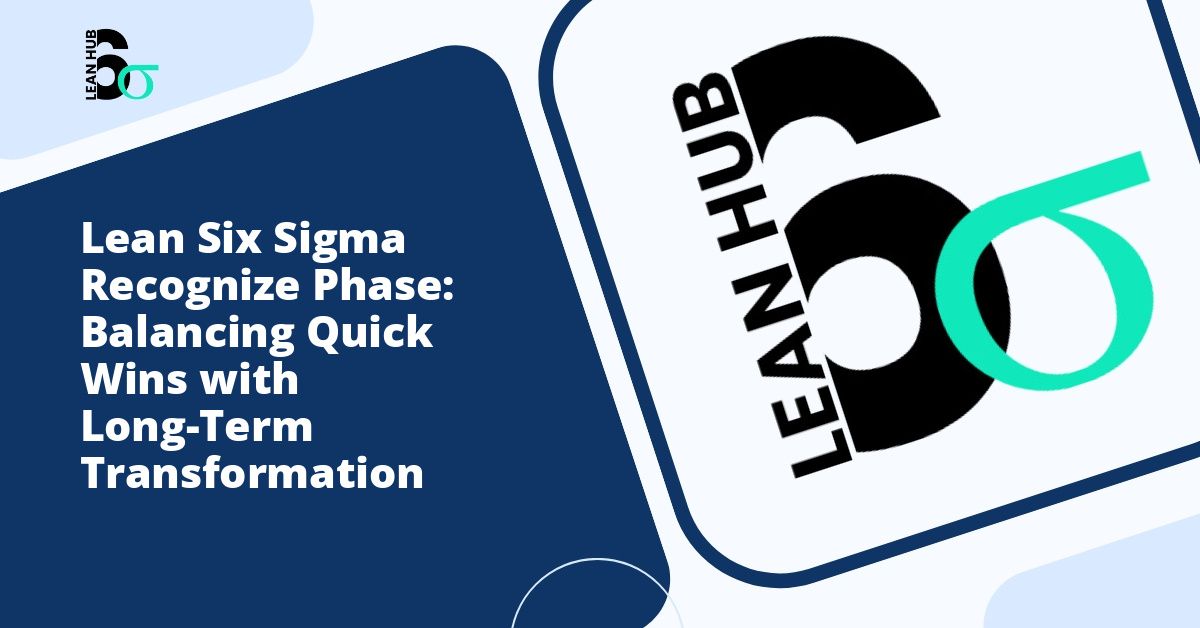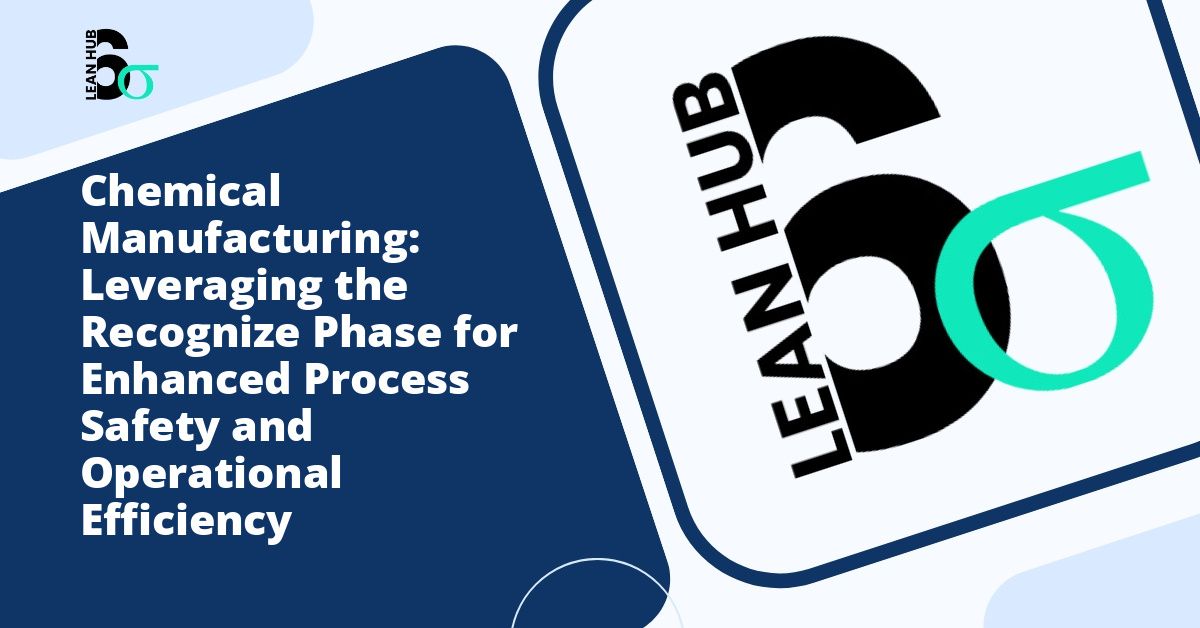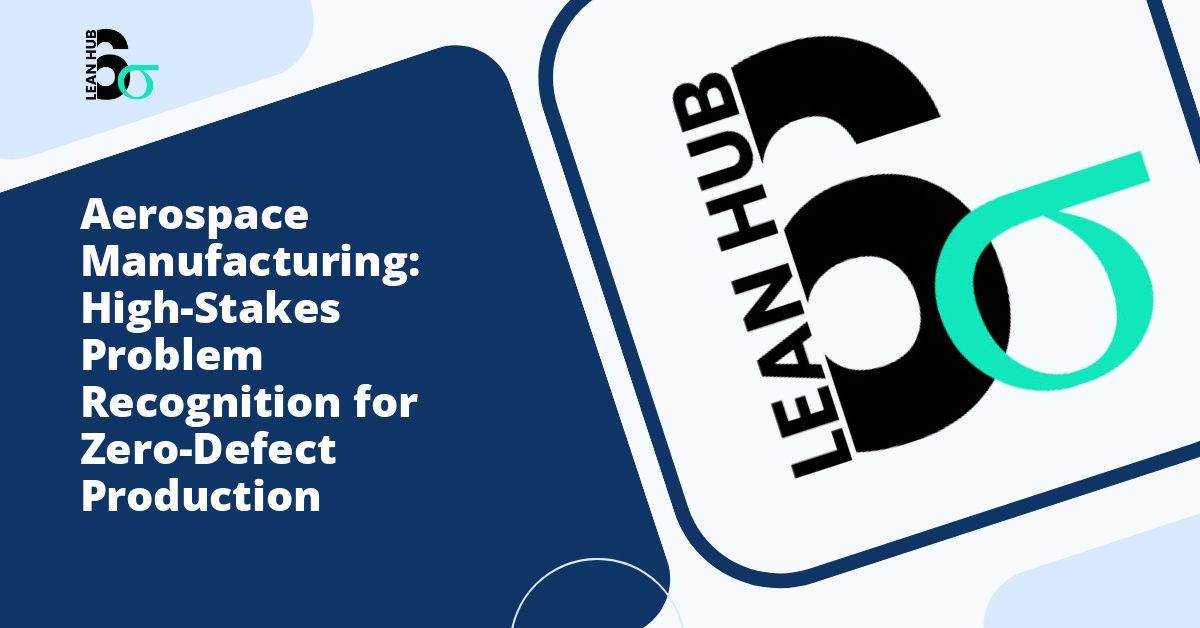Organizations embarking on process improvement initiatives often face a critical dilemma: should they pursue immediate results through quick wins, or commit to comprehensive long-term transformation? Within the framework of lean six sigma, the recognize phase serves as a pivotal starting point where leaders must strategically balance these competing demands. Understanding how to navigate this balance can determine whether an improvement program thrives or falters.
Understanding the Recognize Phase in Lean Six Sigma
The recognize phase represents the initial stage of any lean six sigma implementation, where organizations identify opportunities for improvement and establish the foundation for change. This phase involves recognizing existing problems, understanding current performance levels, and determining which processes require attention. More importantly, it sets the tone for whether the organization will pursue incremental changes or fundamental transformation. You might also enjoy reading about Supply Chain Optimization Through the Lean Six Sigma Recognize Phase: A Complete Guide.
During this critical phase, leadership teams assess organizational readiness, identify potential improvement projects, and determine resource allocation strategies. The decisions made here ripple through the entire improvement initiative, influencing team morale, stakeholder engagement, and ultimate success rates. You might also enjoy reading about What is the Recognize Phase in Lean Six Sigma? A Complete Guide for Beginners.
The Appeal of Quick Wins
Quick wins represent low-hanging fruit in the improvement landscape. These are projects that can be completed relatively quickly, require minimal resources, and deliver visible results within weeks or months rather than years. You might also enjoy reading about Change Management Strategies for the Recognize Phase: A Comprehensive Guide.
Benefits of Pursuing Quick Wins
- Builds momentum and enthusiasm: Early successes create positive energy and demonstrate that change is possible, motivating teams to continue improvement efforts.
- Secures stakeholder buy-in: Visible results help skeptical stakeholders understand the value of lean six sigma methodologies, making it easier to secure funding and support for larger initiatives.
- Develops team capabilities: Smaller projects provide training opportunities where team members can learn lean six sigma tools without risking major organizational disruptions.
- Generates immediate financial returns: Quick wins often deliver cost savings or revenue enhancements that can fund more ambitious transformation efforts.
- Creates success stories: Early victories provide concrete examples that can be communicated throughout the organization, helping to shift culture toward continuous improvement.
Limitations of Quick Win Strategies
Despite their advantages, quick wins carry inherent limitations. They typically address symptoms rather than root causes, potentially creating a false sense of accomplishment. Organizations that focus exclusively on quick wins may find themselves repeatedly addressing the same fundamental problems in different guises.
Additionally, quick wins rarely challenge existing organizational structures, processes, or power dynamics. This means they often fail to deliver the transformational change necessary to maintain competitive advantage in rapidly evolving markets.
The Case for Long-Term Transformation
Long-term transformation involves fundamental restructuring of processes, systems, and organizational culture. These initiatives typically span multiple years and require significant investment of time, money, and human resources.
Advantages of Transformational Approaches
- Addresses root causes: Comprehensive transformation efforts dig deep to identify and eliminate fundamental problems rather than merely treating symptoms.
- Creates sustainable competitive advantage: By fundamentally improving how the organization operates, transformation initiatives build capabilities that competitors cannot easily replicate.
- Aligns systems and structures: Transformation efforts ensure that all organizational elements work in harmony, eliminating the contradictions and inefficiencies that plague many companies.
- Develops organizational capabilities: Long-term initiatives build deep expertise in lean six sigma methodologies, creating internal resources that drive continuous improvement.
- Delivers exponential returns: While taking longer to materialize, the benefits of transformation compound over time, often exceeding the cumulative impact of numerous quick wins.
Challenges of Transformation Initiatives
Transformation projects face significant challenges. They require sustained leadership commitment over extended periods, which can be difficult when executive teams change or when short-term pressures demand attention. The delayed gratification inherent in transformation can also erode stakeholder support, particularly if early phases involve disruption without visible benefits.
Resource requirements for transformation can strain organizational capacity, potentially impacting day-to-day operations. Additionally, the complexity of these initiatives increases risk, as unforeseen obstacles can derail carefully laid plans.
Strategic Balance: The Dual-Track Approach
The most successful organizations do not view quick wins and long-term transformation as mutually exclusive choices. Instead, they pursue a dual-track approach that leverages the strengths of both strategies while mitigating their weaknesses.
Implementing the Dual-Track Strategy
During the recognize phase, organizations should identify and categorize opportunities along a spectrum from quick wins to transformational projects. This portfolio approach ensures that the improvement program delivers both immediate results and fundamental change.
Quick wins should be selected strategically to support longer-term objectives. For example, a quick win that improves data collection processes might enable more sophisticated analysis for a transformational initiative. This creates synergy between short-term and long-term efforts.
Resource allocation should reflect this dual commitment. Typically, organizations might dedicate 20 to 30 percent of improvement resources to quick wins while investing the majority in transformation efforts. This balance maintains momentum while building toward fundamental change.
Critical Success Factors for the Recognize Phase
Leadership Alignment
The recognize phase requires clear leadership alignment on improvement priorities. Executive teams must agree on which processes to improve, what resources to allocate, and how to balance quick wins with transformation. Without this alignment, improvement efforts risk becoming fragmented and ineffective.
Stakeholder Engagement
Effective stakeholder engagement during the recognize phase ensures that improvement initiatives address real problems rather than perceived issues. Front-line employees often possess invaluable insights into process inefficiencies, while customers can identify gaps between current performance and expectations.
Data-Driven Assessment
The recognize phase must be grounded in objective data rather than assumptions or opinions. Organizations should establish baseline measurements for current performance, quantify improvement opportunities, and set clear targets for both quick wins and transformation initiatives.
Cultural Readiness
Assessing cultural readiness during the recognize phase helps organizations determine the appropriate pace and scope of change. Some organizations can absorb rapid transformation, while others require a more gradual approach that builds capabilities and confidence over time.
Measuring Success Beyond Financial Returns
While financial metrics remain important, successful lean six sigma programs measure success across multiple dimensions. Employee engagement, customer satisfaction, operational efficiency, and organizational learning all provide important indicators of whether improvement efforts are creating lasting value.
Organizations should establish balanced scorecards during the recognize phase that track both quick win metrics and transformation indicators. This comprehensive measurement approach prevents the premature declaration of victory while ensuring that long-term efforts remain on track.
Conclusion: Strategic Wisdom in the Recognize Phase
The recognize phase of lean six sigma implementation represents a critical decision point where organizations set the trajectory for their improvement journey. Rather than choosing between quick wins and long-term transformation, successful organizations pursue both strategically.
Quick wins generate momentum, build capabilities, and secure stakeholder support, creating favorable conditions for more ambitious transformation. Long-term transformation addresses root causes, builds sustainable competitive advantage, and creates organizational capabilities that drive continuous improvement.
By thoughtfully balancing these approaches during the recognize phase, organizations can achieve immediate results while building toward fundamental change. This strategic wisdom transforms lean six sigma from a collection of improvement tools into a comprehensive management philosophy that delivers enduring value.
The most successful improvement programs recognize that quick wins and transformation are not competing strategies but complementary elements of a comprehensive approach to organizational excellence. Leaders who embrace this perspective during the recognize phase position their organizations for both immediate success and long-term prosperity.








